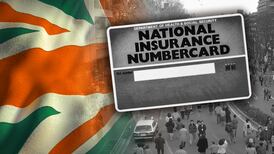PCP, or a Personal Contract Plan, has rapidly become one of the most popular ways to finance the purchase of a new car in Ireland.
Getting a loan of some description is pretty much a given when buying a car – few if any of us have ready cash in that sort of amount, and a PCP, with its temptingly low monthly repayments, often seems to be the best option. So much so that some have begun to offer PCP deals on used and nearly-new cars.
For those still at the “I don’t know what a tracker mortgage is” stage on PCPs, here’s a short summary: basically, they’re like a hire purchase agreement that’s been to accounting night school.
You pay a deposit (usually by way of trading in your old car, and deposit amounts can be as low as 10 per cent) and agree a finance package.
That package lets you pay off an agreed amount of the value of the car, leaving a “bubble” payment at the end. PCP’s neat trick is to guarantee the residual value of your car.
This guaranteed minimum future value (GMFV) is designed to leave enough value in the car to pay off the bubble and, theoretically, sufficient equity to act as the deposit for your next purchase.
At the end of the PCP agreement, you generally have three options: you can hand back the keys and walk away, debt-free (albeit also car and next deposit free); you can pay the final bubble and keep the car or you can trade in the car against a new one, paying off the bubble as you do so.
All fine and dandy? Not quite. There are some niggling details to having a PCP that generally get glossed over at sales time.
There are restrictions on mileage and condition, for a start. In order to be able to set the GMFV, the car maker has to have some idea of what sort of state the car will be in at the time of trade in. So, you have to maintain the car properly, stick to a main-dealer servicing plan and to an annual mileage limit.
"Mileage bandings are set to allow the calculation of GMFVs," Jennifer Cullen, a marketing specialist at Volkswagen Bank, says. "Without them there is no way to make a fair calculation. The mileage bandings allow Volkswagen Bank Ireland to set GMFVs for different customers based on their mileage requirements.
“If a customer exceeds the mileage, there is a set fee,” she adds, “on average 6 cent per kilometre. This means that a customer travelling 1,000km in excess per annum will incur a reduction in their GMFV of €180. This is only if the customer hands the car back to VWBI.
“ If they part exchange with a dealer and purchase a new car, then this mileage will be factored into the part exchange value and therefore the equity in the next purchase. In simple terms, this is another element of flexibility and choice for our customers.”
Bigger issue
All well and good, but 1,000km is racked up pretty quickly. If, like me, you have family from Belfast to Dublin to Waterford to west Cork, you can easily put 1,000km on a car inside of a week. Condition of the car is an issue too – every bump and scrape will be taken into account come trade-in time.
Potentially, a bigger issue with PCP is that it restricts what you do with the car during the term. If you’ve taken out an old-fashioned bank or credit union loan, then the car is yours to do with as you please. Rack up mileage, add a new stereo or, crucially, sell it if you need to.
On a PCP, you cannot decide to sell the car if your personal or financial circumstances change. With a loan, you can, even if you then have to pay back the balance of the loan out of the price of the car. But at least the profits are yours.
(In fairness, one can suppose that the lower repayments of a PCP might make a scenario of financial inclemency less likely, but still . . .)
Emma Toner, marketing manager with Peugeot importer Gowan distributors, argues that a PCP is still a more flexible and cost-effective way of buying a car.
“The PCP customer has even more flexibility than with a HP agreement and they can decide on the course of action best suited to their personal circumstances at the end of the agreement.
“The customer weighs up the various choices and opts for the one that best suits their current position. Should they wish to keep the car, they can opt to pay the outstanding amount and keep the car, and can further finance the remainder. It is quite commonplace for customers to finance three-year-old cars.
“Alternatively, they hand the keys back or use the equity in the vehicle to start again under a new contract and drive away in a new vehicle with similar monthly payments and no deposit required. But the key thing here is that they make the choice that best suits them.
“Indeed, in a very budget-conscious world post-Celtic Tiger, I don’t believe Irish consumers nowadays enter into finance agreements with their eyes closed or are pushed into new car deals, or are they unaware of so-called ‘pitfalls’.
“Rather,” Toner adds, “they are extremely savvy and more likely to arrive into a car dealership with an exact car model and version and trim in mind, with specific accessories already chosen.
“We see this all the time in dealer showrooms and at shows and exhibitions. They will have done their homework on service plans and know exactly what they can stretch to in monthly finance payments.”
Average buyer
Toner says that once upon a time, the average new car buyer visited a showroom seven times but nowadays, they visited once and were well informed. “It’s now a matter of simply doing a deal which entails agreeing on a trade-in value and delivery date.”
That’s actually rather heartening to hear, that the car-buying public has awoken to the need to do their homework before setting out to buy.
There is one final issue, though, for PCPs to deal with. They are, in effect, a way of trying to ensure that you will come back and buy another car from the same dealer or manufacturer. The whole purpose of the bubble payment and the GMFV is to set up a situation where the easiest and simplest option is to roll over into a new car and a new plan.
All well and good, but it does seem a little like saving money in the short term by spending more over a longer period.
And there’s another sting in the tail. If you decide on the hand-the-car-back option, you don’t get to make anything out of the car’s equity. No matter how well you have kept it and maintained it, if you hand it back, the value above the bubble payment reverts to the dealer and you get nothing.
(Equally, the dealer or finance house has to choke down on a loss if there’s a negative equity situation but that’s a relative rarity.)
PCP is a clever financial solution to a lot of issues. It gives car buyers access at a preferential monthly repayment rate to a nice new car and gives a series of well-laid out options for what to do when the term ends, which is all good. But it’s not a free financial lunch and don’t go thinking it is.
PCP was created for one purpose – to help car makers sell you a car today and to more or less guarantee that in three years you’ll be back for another. Eyes open, please everyone – and read the fine print.

















